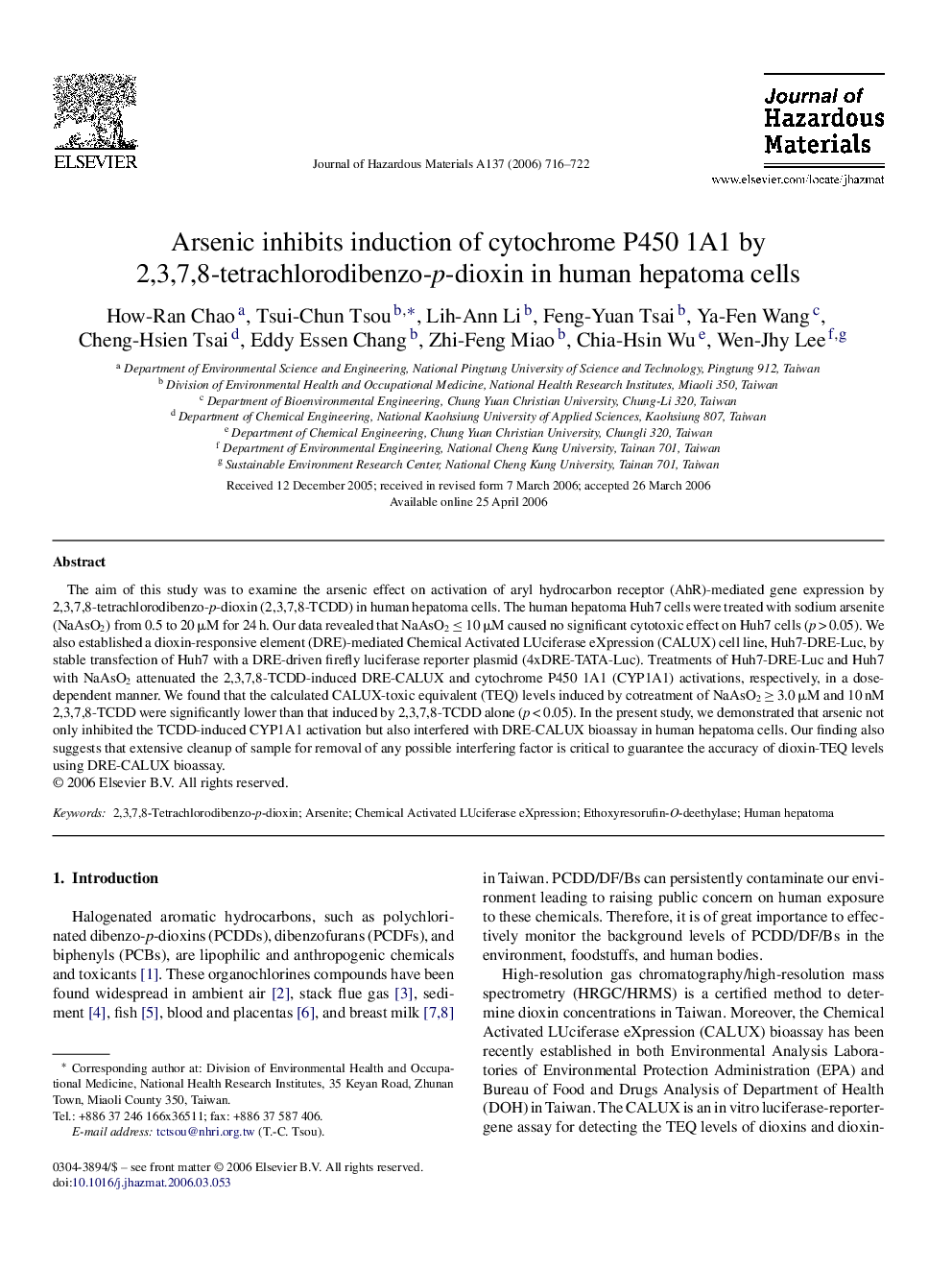| Article ID | Journal | Published Year | Pages | File Type |
|---|---|---|---|---|
| 585315 | Journal of Hazardous Materials | 2006 | 7 Pages |
Abstract
The aim of this study was to examine the arsenic effect on activation of aryl hydrocarbon receptor (AhR)-mediated gene expression by 2,3,7,8-tetrachlorodibenzo-p-dioxin (2,3,7,8-TCDD) in human hepatoma cells. The human hepatoma Huh7 cells were treated with sodium arsenite (NaAsO2) from 0.5 to 20 μM for 24 h. Our data revealed that NaAsO2 â¤Â 10 μM caused no significant cytotoxic effect on Huh7 cells (p > 0.05). We also established a dioxin-responsive element (DRE)-mediated Chemical Activated LUciferase eXpression (CALUX) cell line, Huh7-DRE-Luc, by stable transfection of Huh7 with a DRE-driven firefly luciferase reporter plasmid (4xDRE-TATA-Luc). Treatments of Huh7-DRE-Luc and Huh7 with NaAsO2 attenuated the 2,3,7,8-TCDD-induced DRE-CALUX and cytochrome P450 1A1 (CYP1A1) activations, respectively, in a dose-dependent manner. We found that the calculated CALUX-toxic equivalent (TEQ) levels induced by cotreatment of NaAsO2 â¥Â 3.0 μM and 10 nM 2,3,7,8-TCDD were significantly lower than that induced by 2,3,7,8-TCDD alone (p < 0.05). In the present study, we demonstrated that arsenic not only inhibited the TCDD-induced CYP1A1 activation but also interfered with DRE-CALUX bioassay in human hepatoma cells. Our finding also suggests that extensive cleanup of sample for removal of any possible interfering factor is critical to guarantee the accuracy of dioxin-TEQ levels using DRE-CALUX bioassay.
Related Topics
Physical Sciences and Engineering
Chemical Engineering
Chemical Health and Safety
Authors
How-Ran Chao, Tsui-Chun Tsou, Lih-Ann Li, Feng-Yuan Tsai, Ya-Fen Wang, Cheng-Hsien Tsai, Eddy Essen Chang, Zhi-Feng Miao, Chia-Hsin Wu, Wen-Jhy Lee,
